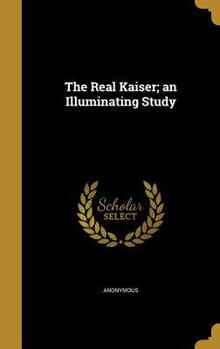The Real Kaiser; An Illuminating Study
Select Format
Select Condition 
Book Overview
No Synopsis Available.
Format:Hardcover
Language:English
ISBN:020111366X
ISBN13:9780201113662
Release Date:January 1986
Publisher:Addison Wesley Publishing Company
Length:723 Pages
Weight:2.43 lbs.
Dimensions:1.3" x 6.7" x 9.5"
Customer Reviews
6 customer ratings | 6 reviews
There are currently no reviews. Be the first to review this work.





















